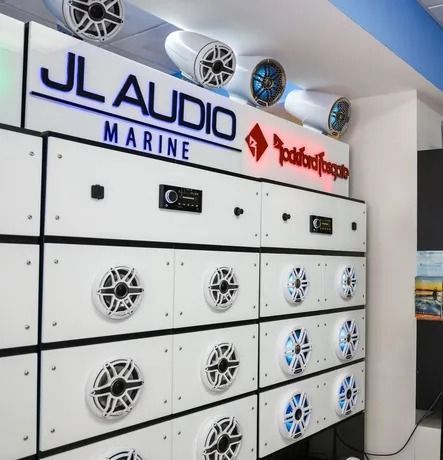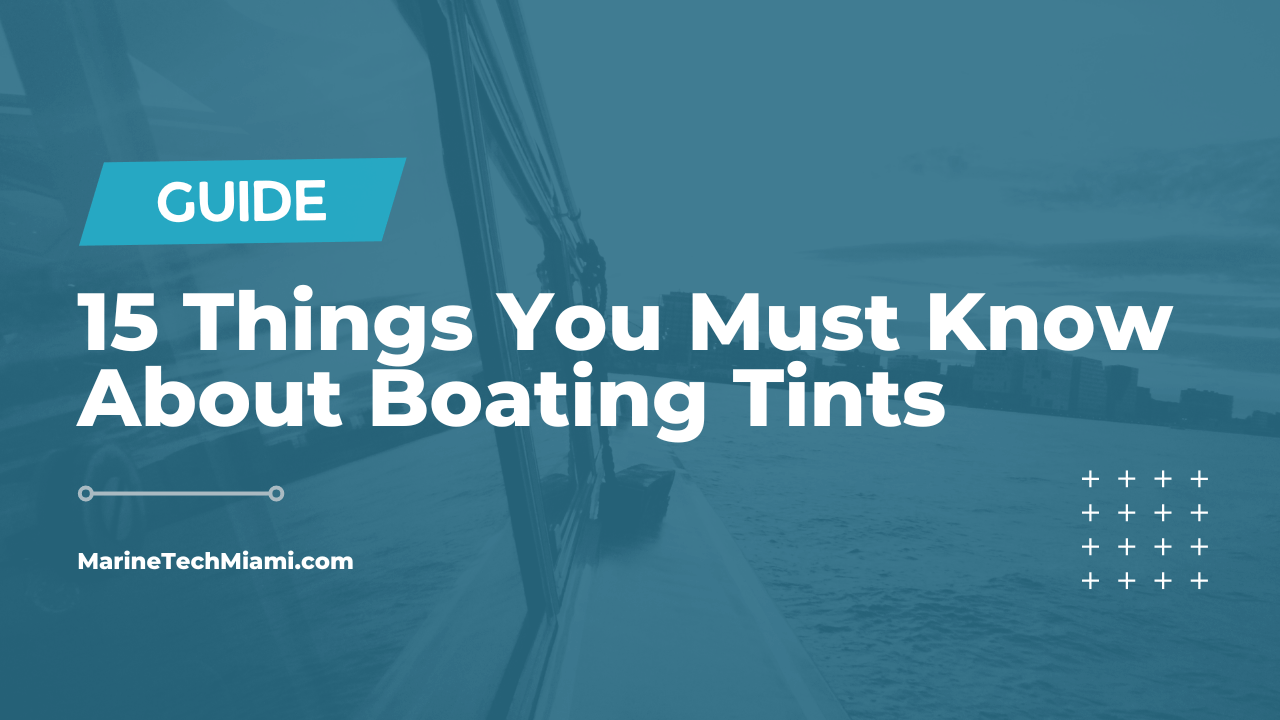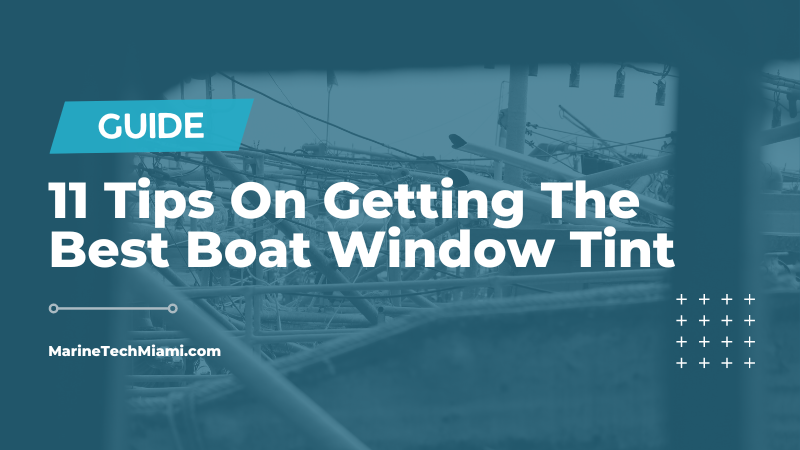Ultimate Guide To Marine Electronics Setup (2023)
Marine Tech Miami • May 9, 2023
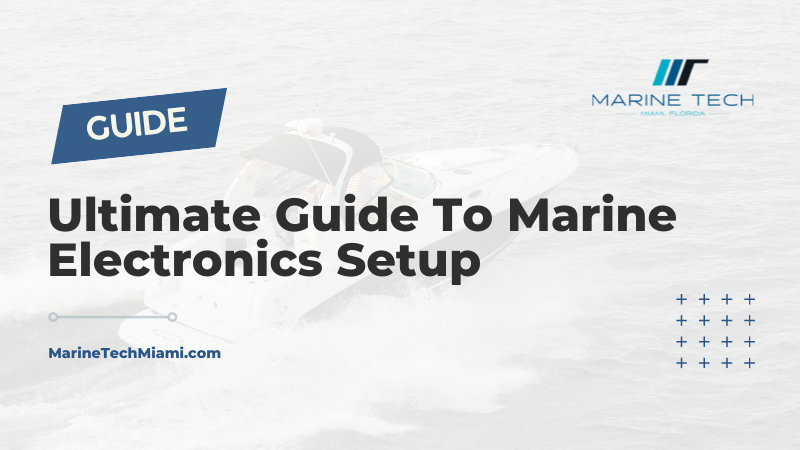
Marine electronics have come a long way in the last few decades, transforming from simple tools to complex systems that help boat owners navigate the waters with ease and accuracy.
With the advent of GPS, fishfinders, marine radios, and other advanced equipment, setting up a marine electronics system can seem daunting.
In this ultimate guide, we'll walk you through the basics of marine electronics setup, including choosing the right gear, installation tips, and system integration.
Section 1: Choosing the Right Marine Electronics
1.1 GPS and Chartplotters
A GPS (Global Positioning System) device is essential for navigation, providing accurate location data and helping you plot your course.
Modern GPS devices come with built-in chartplotters, displaying detailed maps of coastal and inland waters.
When selecting a GPS/chartplotter, consider factors such as screen size, map compatibility, and ease of use.
Additionally, some units offer advanced features like radar and AIS (Automatic Identification System) integration, which can improve situational awareness and safety.
1.2 Fishfinders and Depth Sounders
Fishfinders use sonar technology to display underwater terrain, including fish and other objects.
Depth sounders provide water depth information, which is crucial for navigating shallow waters or finding the best fishing spots.
When choosing a fishfinder or depth sounder, consider factors such as display resolution, sonar frequency, and transducer compatibility.
Advanced models may include features like side-scan sonar and down-imaging capabilities, providing a more detailed view of the underwater environment.
1.3 Marine VHF Radios
Marine VHF radios are essential for communication and safety on the water.
They allow you to communicate with other boats, marinas, and emergency services.
When selecting a VHF radio, consider factors such as power output, waterproof rating, and channel availability.
Additionally, some models include features like GPS integration and DSC (Digital Selective Calling) capabilities, which can enhance safety and convenience.
1.4 Radar Systems
Marine radar systems use radio waves to detect and locate objects, such as other vessels, landmasses, and weather systems.
They are particularly useful in low visibility conditions, such as fog or heavy rain.
When choosing a radar system, consider factors like range, antenna size, and compatibility with other electronics.
Some advanced radar systems also offer features like MARPA (Mini Automatic Radar Plotting Aid) and AIS integration.
1.5 Autopilots
An autopilot system can maintain a boat's course and speed, allowing the captain to focus on other tasks or enjoy a more relaxed cruising experience.
When selecting an autopilot, consider factors like compatibility with your boat's steering system, ease of installation, and integration with other electronics.
Advanced autopilot systems may offer features like remote control, integration with wind instruments, and route planning capabilities.
Section 2: Installation Tips for Marine Electronics
2.1 Mounting Locations
When installing marine electronics, it's essential to consider mounting locations that provide optimal visibility, accessibility, and protection from the elements.
Common mounting locations include the helm station, overhead compartments, and flush-mounted installations.
Be sure to take into account factors like glare, cable routing, and the potential for interference with other equipment.
2.2 Power Supply and Wiring
Proper wiring and power supply are crucial for reliable performance and safety.
Be sure to use marine-grade wiring and connectors, along with circuit protection devices like fuses and circuit breakers.
Route cables in a way that minimizes exposure to water and damage, and label wires for easy identification during maintenance or troubleshooting.
2.3 Transducer Installation
Transducer installation is critical for accurate performance of fishfinders and depth sounders.
Select a mounting location that provides a clear, unobstructed view of the water and minimizes turbulence or air bubbles.
Common transducer mounting options include transom mounts, thru-hull mounts, and in-hull mounts.
Be sure to follow the manufacturer's guidelines for installation and use an appropriate marine sealant to prevent water intrusion.
Section 3: System Integration
3.1 Networking and Connectivity
Integrating your marine electronics can provide a more seamless and efficient user experience.
Many modern devices use NMEA 2000 or NMEA 0183 protocols to communicate and share data.
By connecting devices like your GPS, fishfinder, VHF radio, and autopilot, you can access shared data and control multiple devices from a single display.
Additionally, some systems offer wireless connectivity options, allowing you to view and control your electronics from a smartphone or tablet.
3.2 Customization and Configuration
Once your marine electronics are installed and integrated, it's essential to customize and configure the system for optimal performance.
This may include calibrating your instruments, setting up user profiles, and adjusting display settings for maximum visibility and ease of use.
Be sure to consult your equipment manuals and follow the recommended procedures for setup and calibration.
What is the difference between NMEA 2000 and NMEA 0183?
NMEA 2000 is a newer marine communication standard that offers higher data transfer rates, a more straightforward plug-and-play installation, and support for more devices on the network compared to NMEA 0183.
While NMEA 0183 is still used in many older marine electronics, NMEA 2000 is becoming the preferred choice for modern systems due to its increased capabilities and ease of use.
Can I connect marine electronics from different manufacturers?
Most modern marine electronics use standardized communication protocols, such as NMEA 2000 or NMEA 0183, which allow devices from different manufacturers to communicate and share data.
However, it's essential to verify compatibility between devices before attempting to connect them, as some manufacturers may use proprietary communication protocols or require specific adapters.
How often should I update my GPS/chartplotter's maps?
Updating your GPS/chartplotter's maps regularly is essential for accurate navigation and safety.
The frequency of updates may depend on the specific map provider and the level of detail included in the maps.
As a general guideline, it's recommended to update your maps at least once a year or before any significant trip that takes you to unfamiliar waters.
Can I install marine electronics myself, or should I hire a professional?
Installing marine electronics can be a DIY project for those with some technical knowledge and experience.
However, if you're unsure about your abilities or if the installation involves complex tasks like drilling holes in your boat's hull, it's best to consult a professional marine electronics installer.
Professional installation can ensure proper setup, calibration, and performance of your equipment while minimizing the risk of damage to your boat.
How do I maintain and troubleshoot my marine electronics?
Regular maintenance and inspection of your marine electronics can help ensure their reliability and longevity.
Keep your devices clean, dry, and protected from the elements, and ensure that all connections are secure and corrosion-free.
Consult your equipment manuals for specific maintenance guidelines and troubleshooting tips.
If you encounter problems with your marine electronics, it may be necessary to contact the manufacturer or a professional technician for assistance.
What is AIS, and how does it benefit my marine electronics setup?
AIS (Automatic Identification System) is a maritime communication system that allows vessels to share their location, speed, course, and other information with other nearby boats and shore stations.
Integrating AIS with your marine electronics setup can significantly enhance safety and situational awareness, particularly in crowded or high-traffic areas.
AIS can also be integrated with radar systems and chartplotters to provide a more comprehensive view of the surrounding environment.
Conclusion
A well-designed and properly installed marine electronics system can greatly enhance your boating experience, providing valuable navigation, communication, and safety features.
By selecting the right equipment, following best practices for installation, and integrating your devices, you can create a marine electronics setup that meets your specific needs and preferences.
Contact Us
Contact Us
Thank you for contacting us.
We will get back to you as soon as possible.
We will get back to you as soon as possible.
Oops, there was an error sending your message.
Please try again later.
Please try again later.
Recent Posts
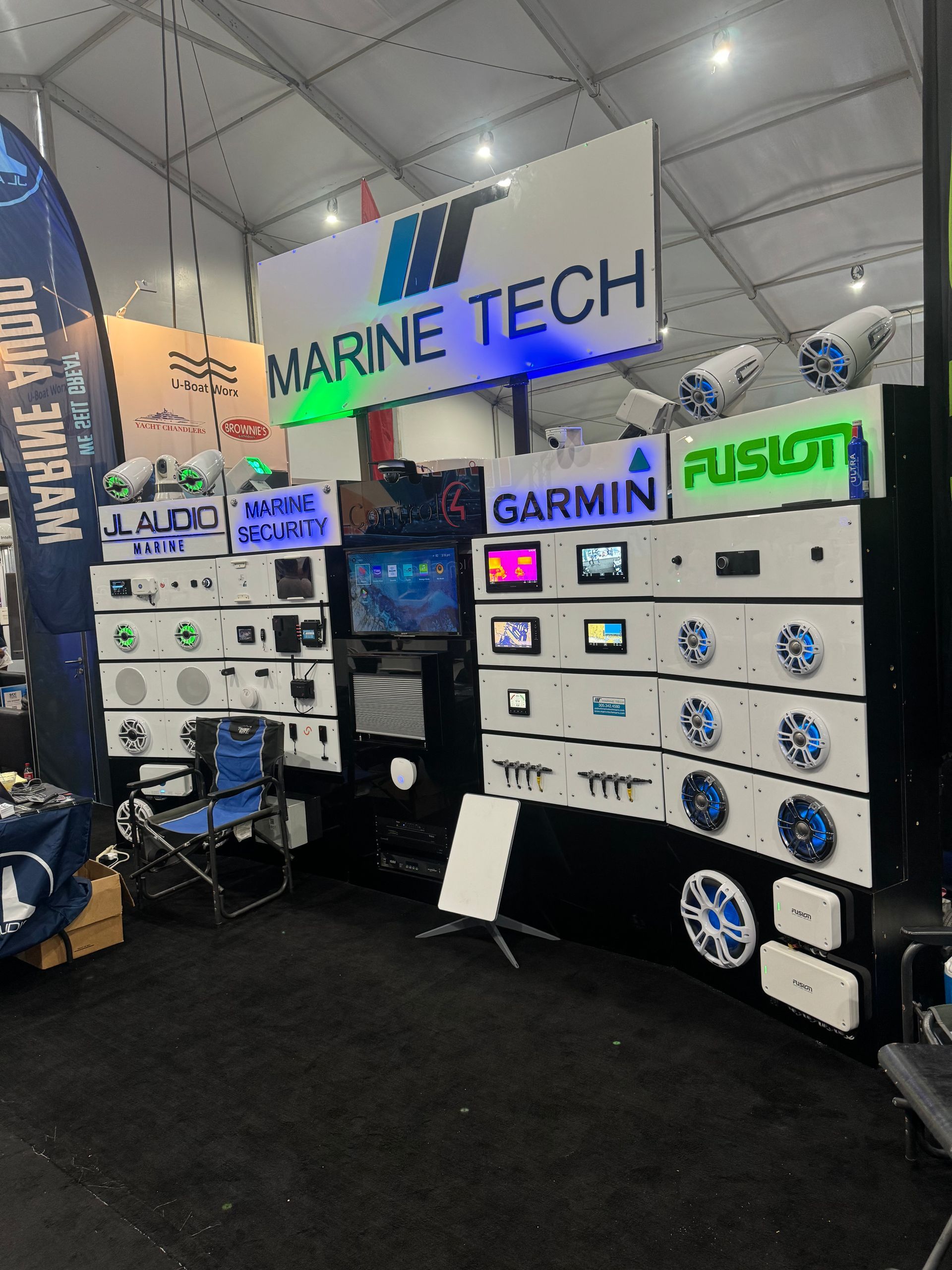
By Marine Tech Miami
•
October 30, 2023
The recent Boat Show in Fort Lauderdale was a hub of excitement and innovation, showcasing the latest trends in the boating industry. One notable observation was the lack of automation in new vessels. Many boat owners are missing out on the incredible benefits that automation can bring to their boating experience. In this blog post, we'll explore how implementing Control4 automation can revolutionize the way you interact with your vessel. Streamlining Control with a Single Device: Gone are the days of juggling multiple remote controls to manage different systems on your vessel. With Control4, you can easily control everything from lighting and climate control to entertainment and security, all from a single device. Imagine the convenience of adjusting the lighting ambiance, setting the perfect temperature, and even playing your favorite music, all at the touch of a button on your phone or iPad. Seamless Integration and Customization: Control4 offers seamless integration with various systems and devices on your vessel. Whether it's integrating with your existing audiovisual equipment or connecting with smart sensors for enhanced security, Control4 can be customized to meet your specific needs. Want to automate the opening and closing of blinds or curtains? Control4 can make it happen. The possibilities are endless, allowing you to create a personalized and tailored boating experience. Enhanced Safety and Security: Boat owners understand the importance of safety and security while out on the water. Control4 automation provides peace of mind by allowing you to monitor and control security cameras, door locks, and alarm systems remotely. Forgot to lock the cabin door? No problem. With Control4, you can secure your vessel with a simple tap on your device, ensuring that your boat and belongings are always protected. Expert Assistance from Marinetechmiami.com: Implementing Control4 automation may seem like a daunting task, but that's where Marinetechmiami.com comes in. Our team of experts specializes in integrating Control4 systems into vessels, ensuring a seamless and hassle-free installation process. We'll work closely with you to understand your needs and design a customized automation solution that fits your vessel perfectly. Conclusion: Don't miss out on the incredible benefits that Control4 automation can bring to your boating experience. Say goodbye to the hassle of multiple remote controls and embrace the convenience of controlling everything with a single device. Contact Marinetechmiami.com today to explore how Control4 can transform your vessel into a smart and connected oasis on the water.
CONTACT US
Looking to upgrade your marine electronics?
With more than 25 years of experience, we can help you get started today!
Contact Us In Page
Thank you for contacting us.
We will get back to you as soon as possible.
We will get back to you as soon as possible.
Oops, there was an error sending your message.
Please try again later.
Please try again later.
CONTACT US
Address: Marine Tech Miami. 3611 West Flagler St, Miami, Fl 33135.
E-mail: sales@marinetechmiami.com

